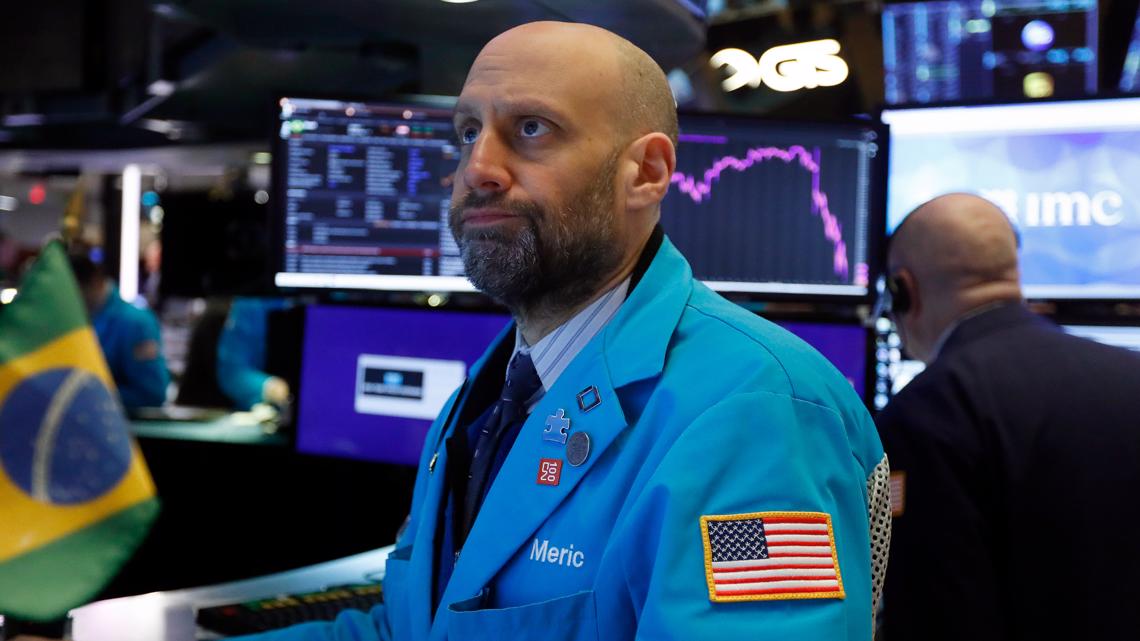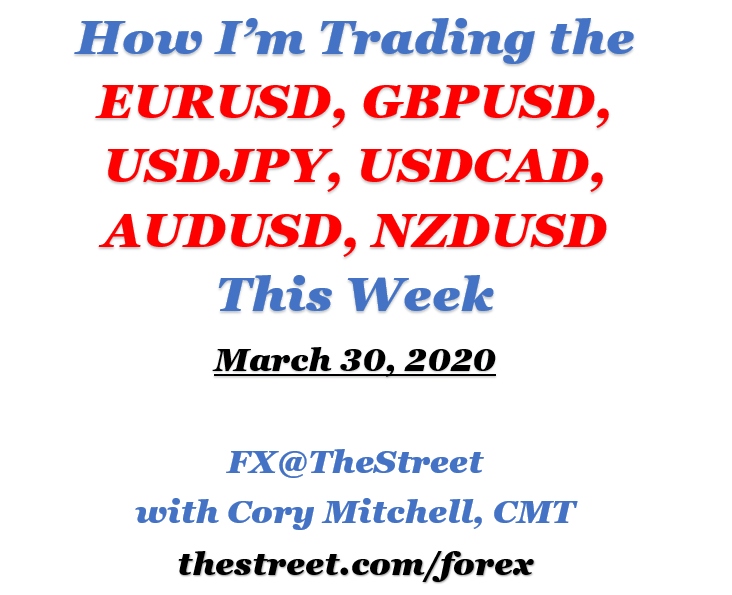Bittrex Global launches Euro-digital currency trading with zero fees - CoinGeek
Bittrex Global launches Euro-digital currency trading with zero fees - CoinGeek |
- Bittrex Global launches Euro-digital currency trading with zero fees - CoinGeek
- US stocks close sharply higher at end of Monday trading - wnep.com
- How I am Trading the Forex Majors This Week, March 30 - TheStreet
- FOREX-Dollar up, but yuan sluggish as traders sceptical of China PMI bounce - Reuters
| Bittrex Global launches Euro-digital currency trading with zero fees - CoinGeek Posted: 30 Mar 2020 02:36 AM PDT Liechtenstein, March 29 – Bittrex Global, a global leading blockchain technology and digital currency exchange, has today announced that customers will be able to trade digital currencies with Euros without trading fees until April 30. Allowing customers to seamlessly trade currencies, Euro trading at Bittrex starts with the following digital currency-euro pairs: BTC-EUR, ETH-EUR, USDT-EUR, BSV-EUR, BCH-EUR and TRX-EUR. With new digital currency-euro trading pairs to be added weekly, Bittrex Global is offering European consumers who have holdings in Euros and interest in digital currency the opportunity to trade without converting to USD first. As Bittrex Global looks to innovate and diversify its offerings, with a focus on enhancing user experience, this latest addition allows for seamless payments. To ensure ease of access, customers can use credit cards, SEPA payments and other payments on ramps to access the digital currency markets. About Bittrex Global Bittrex Global has one of the most secure trading platforms and digital wallet infrastructures in the world where customers can access exciting new products. Built on Bittrex's cutting-edge technology, Bittrex Global provides a high-level experience for professional and novice customers alike. Bittrex Global is headquartered in the Principality of Liechtenstein near the financial center of Zurich. Learn more at: https://global.bittrex.com/ New to Bitcoin? Check out CoinGeek's Bitcoin for Beginners section, the ultimate resource guide to learn more about Bitcoin—as originally envisioned by Satoshi Nakamoto—and blockchain. |
| US stocks close sharply higher at end of Monday trading - wnep.com Posted: 30 Mar 2020 01:40 AM PDT  Analysts expect markets to remain turbulent until the outbreak begins to wane. BANGKOK, Thailand — Stocks closed sharply higher than before at the end of Monday's trading day on Wall Street. The New York Stock Exchange closed at 10360.41, up 173.20, the NYSE Exchange closed at 1486.04, down 1.19 percent. The Nasdaq composite ended Monday trading at 7734.21, up 231.84 and Standard and Poors 500 closed at 2607.91 up 66.44. Stocks are opened higher on Wall Street Monday in more volatile trading as investors try to assess whether global authorities can do enough to nurse the economy through the damage caused by the coronavirus outbreak. The S&P 500 rose 1% in early trading. European markets were mixed after erasing earlier losses. Asian indexes also fell, but not nearly as much as they have in the brutal swings that have rocked investors over the last month. The price of oil fell 6% to $20 a barrel, a level that is sure to cause more pain for the already battered energy industry. Hopes that a $2 trillion U.S. relief bill would ease the economic havoc brought by the pandemic did little to alleviate the gloom prevailing in many markets. On Monday, Germany's DAX was flat at 9,634.00 while the CAC 40 in Paris lost 1.1% to 4,304.63. Britain's FTSE 100 declined 1.7% to 5,415.26. The pandemic relief bill approved by the Congress and signed Friday by President Donald Trump includes direct payments to households, aid to hard-hit industries like airlines and support for small businesses. Analysts expect markets to remain turbulent, however, until the outbreak begins to wane. "Sentiment once again took a turn for the worse going into a week of reckoning by means of economic fundamentals," Jingyi Pan of IG said in a commentary. "The rally seen for Wall Street last week may amount to little more but a relief rally with sentiment turning sour once again going into a fresh week." The push to deliver financial relief has gained urgency worldwide as the outbreak widens. The number of cases in the U.S. has now surpassed those in China and Italy, climbing to more than 142,000 known cases, according to Johns Hopkins University. The worldwide total has topped 723,000, and the death toll has topped 34,000, while nearly 152,000 have recovered. On Monday, Tokyo's Nikkei 225 lost 1.6% to 19,084.97, while the Kospi in South Korea was flat at 1,717.12. The Shanghai Composite shed 0.9% to 2,747.21, while the Hang Seng in Hong Kong slipped 1.3% to 23,175.11. Shares fell in Taiwan and Southeast Asia. India's Sensex fell 4.2% to 28,524.43. Some investors have emerged to hunt for bargins as prices kept falling, said Francis Lun, CEO of Geo Securities in Hong Kong. He views it as a bit too early. "I think whatever rally you see, is really a false rally, it will be only a flash in the pan. It's only temporary. Don't go bottom fishing just yet because the worst is still to come," Lun said. For most people, the new coronavirus causes mild or moderate symptoms, such as fever and cough that clear up in two to three weeks. For some, especially older adults and people with existing health problems, it can cause more severe illness, including pneumonia, or death. The damage from the pandemic to corporate profits, the ultimate driver of stock prices, remains uncertain. But energy companies are suffering as the price of oil sinks. U.S. benchmark crude dropped 5.4% or $1.16 to $20.35 per barrel in electronic trading on the New York Mercantile Exchange. It slid 4.8% to close at $21.51 a barrel on Friday. Goldman Sachs has forecast that it will fall well below $20 a barrel in the next two months because storage will be filled to the brim and wells will have to be shut in. Brent crude, the international standard, gave up 6% or $1.67 to $26.28 per barrel. The yield on the 10-year Treasury slipped to 0.64% from 0.68% late Friday. Lower yields reflect dimmer expectations for economic growth and greater demand for low-risk assets. In currency trading, the dollar was at 107.57 Japanese yen, down from 107.94 late Friday. The euro weakened to $1.1094 from $1.1142. |
| How I am Trading the Forex Majors This Week, March 30 - TheStreet Posted: 30 Mar 2020 11:29 AM PDT  This week has started off a bit slower than the past couple of weeks have. We are seeing consolidations on the 4-hour charts on the EURUSD, GBPUSD, USDJPY, USDCAD, AUDUSD, and NZDUSD. The USDCAD had an early move up, while the EURUSD had a move to the downside in early trading this week. That said, they are once again consolidating. So all these pairs are awaiting consolidation breakouts. I am willing to trade in either direction since the moves are big enough to likely be profitable. I am using a trailing stop loss on my positions, and Renko charts are the preferred choice right now. The charts in the video are 4-hour charts. The 4- or 1-hour charts just provide an overall context. I then drop down to a 15- or 5-minute chart to find consolidations near the edges of the consolidations on the 4-hour or hourly charts. I then trade a breakout of the small consolidation. Since all these pairs involve the USD, pick one pair and trade the normal position size. Or trade two or three USD positions, but use a 1/2 or 1/3 position size in each. By Cory Mitchell, CMT. Join me in my free Facebook swing trading group. Disclaimer: Nothing in this article is personal investment advice, or advice to buy or sell anything. Trading is risky and can result in substantial losses, even more than deposited if using leverage. |
| FOREX-Dollar up, but yuan sluggish as traders sceptical of China PMI bounce - Reuters Posted: 30 Mar 2020 07:20 PM PDT * Graphic: World FX rates in 2020 tmsnrt.rs/2RBWI5E * Tuesday is last trading of Japan's fiscal year * Other investors close books at end of Jan-March quarter * Traders look to economic data to measure virus impact By Stanley White TOKYO, March 31 (Reuters) - The dollar rose against the yen on Tuesday as Japanese investors and companies rushed to cover a shortage of the U.S. currency before their fiscal year end, but sentiment remained fragile as the global coronavirus crisis showed no signs of abating. China's yuan was little changed even after a key survey showed manufacturing returned to growth in March, as investors remain sceptical of the uptick given many businesses are still struggling resume full operations amid widespread disruptions caused by the coronavirus. The pound fell against the greenback and the euro as a sovereign ratings downgrade continued to weigh on sterling, underlining the strain on public finances from a much needed massive fiscal stimulus. Tuesday is the last trading data for Japan's fiscal year and the end of the quarter for major investors elsewhere, which could lead to some volatile swings as big players in the currency market close their books. However, analysts warn that an almost certain global recession due to the coronavirus will remain a dominant influence in trading and eventually favour currencies least affected by the economic downturn. "The talk is Japanese names are short of dollars, which is likely to keep the dollar bid well into London time," said Yukio Ishizuki, FX strategist at Daiwa Securities in Tokyo. "We have to look beyond that and focus on what's going on in China's economy. Even if there is some decent data from China, I cannot be optimistic, because economic activity in many countries is grinding to a halt." The dollar rose 0.69% to 108.55 yen on Tuesday in Asia. In the onshore market, the yuan held steady at 7.0977 against the dollar. China's official manufacturing Purchasing Manager's Index unexpectedly showed activity swung to expansion in March, but traders tempered their optimism because China's economy is still expected to suffer a steep economic contraction in the first quarter and other major economies are also taking a big hit. Only on Monday the People's Bank of China unexpectedly cut its reverse repo rate by the most in almost five years to relieve pressure on the economy. The euro fell 0.24% to $1.1013. Traders are bracing for data expected to show a rise in German unemployment as the global economy reels from the coronavirus pandemic. Against the Swiss franc, the dollar edged up to 0.9610, following a 0.8% gain on Monday. Sterling fell 0.71% to $1.2331, and against the euro, the pound fell 0.5% to 89.34 pence. The pound remained under the gun after ratings agency Fitch cut Britain's sovereign debt rating on Friday, saying debt levels would jump as it ramped up spending to offset a near shutdown of the economy. Traders are also awaiting the release of UK gross domestic product later on Tuesday. The New Zealand dollar dipped after the country's government extended a nationwide state of emergency for another seven days to slow the spread of the coronavirus, but the kiwi quickly regained its composure to trade steady at $0.6029. The Australian dollar held its ground at $0.6174. The antipodean currencies have come under heavy selling pressure over recent weeks as their close economic ties to China and the global commodities trade make them vulnerable to the coronavirus outbreak. (Reporting by Stanley White Editing by Shri Navaratnam) Our Standards:The Thomson Reuters Trust Principles. |
| You are subscribed to email updates from "currency trading" - Google News. To stop receiving these emails, you may unsubscribe now. | Email delivery powered by Google |
| Google, 1600 Amphitheatre Parkway, Mountain View, CA 94043, United States | |
Comments
Post a Comment